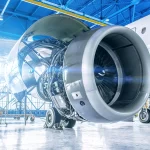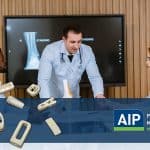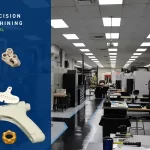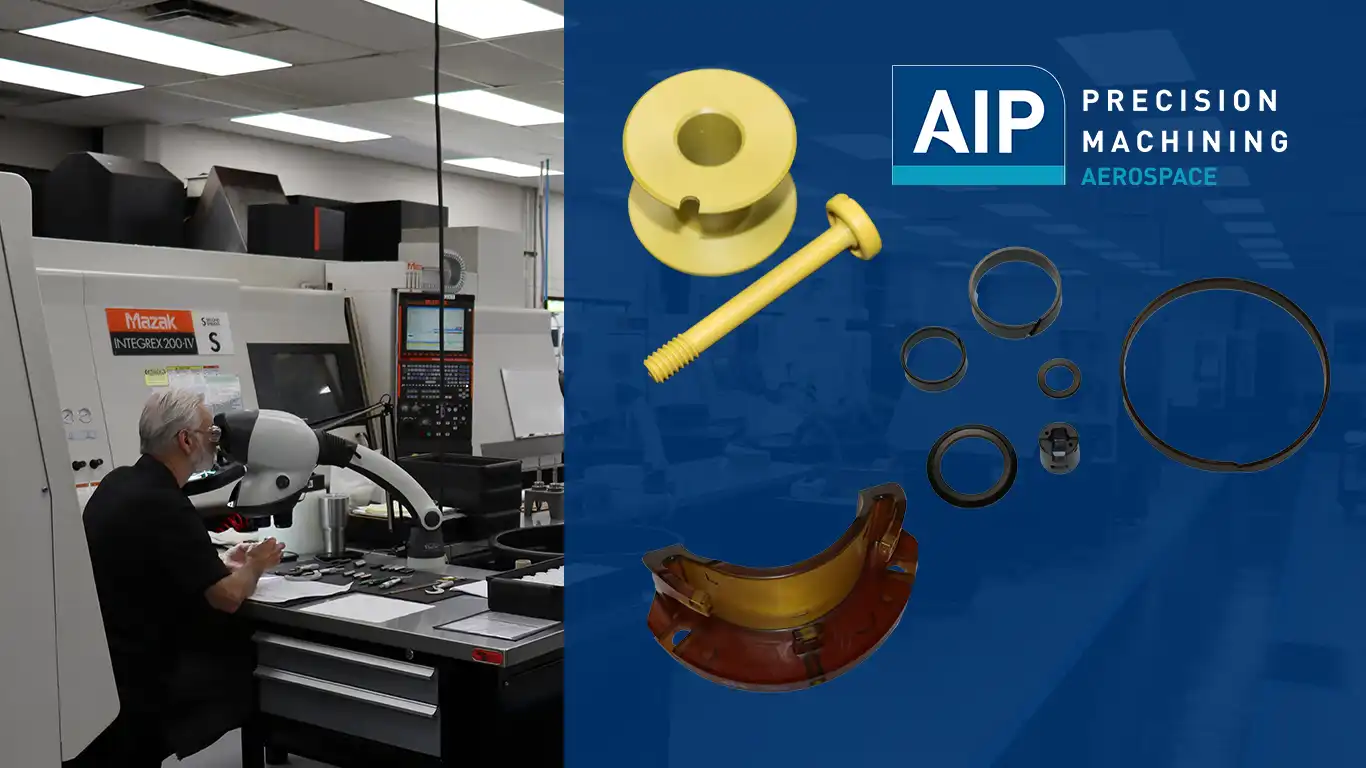
In aerospace parts manufacturing, ensuring the utmost quality and reliability is not just an objective but a fundamental necessity. High-quality aerospace components are critical for the safety, performance, and durability of aircraft. This sector relies heavily on sophisticated aerospace machining techniques, comprehensive quality management systems (QMS), and stringent aerospace quality standards like AS9100 and ISO 9001 to meet the demands for precision and excellence. In addition, compliance with regulations set forth by the Federal Aviation Administration (FAA) ensures that each component meets rigorous safety and performance benchmarks, highlighting the cardinal role of quality assurance in aerospace parts manufacturing.
This article details the intricacies of fostering quality assurance and control within aerospace parts manufacturing, from the initial design phase to the final delivery. It examines the importance of implementing robust Quality Management Systems (QMS), including practices like Total Quality Management (TQM) and the strategic role of supply chain management in maintaining part integrity and traceability. Further, it explores compliance with regulatory standards and the adoption of techniques and tools designed to augment the aerospace quality management system. Emphasis will also be placed on continuous improvement practices that drive innovation and efficiency in the manufacturing process. Lastly, we’ll detail the emerging trends in the field and their implications for future aerospace product and parts manufacturing, providing insights into how the industry is continuously evolving to meet the challenges of tomorrow.
Importance of Quality Assurance in Aerospace Manufacturing
Quality assurance in aerospace manufacturing is fundamental, beginning at the design phase and extending through production, installation, and maintenance. This rigorous process ensures that each aerospace component adheres to precise standards and specifications, crucial for the safety and reliability of each final product.
Ensuring Safety and Reliability
Safety is paramount in aerospace manufacturing, where the lives of pilots and passengers are at stake. Quality assurance processes are meticulously designed to prevent accidents by ensuring that all aerospace components are free from defects and operate as designed and intended. For instance, rigorous testing and inspections, adherence to aerospace quality standards such as AS9100 and ISO 9001, and compliance with regulations from bodies like the Federal Aviation Administration (FAA) are integral to maintaining high safety standards. These measures not only safeguard the well-being of air travelers but also enhance the reliability of the aircraft, which is essential for airlines to maintain schedules and trust within the industry.
Impact on Product Life Cycle
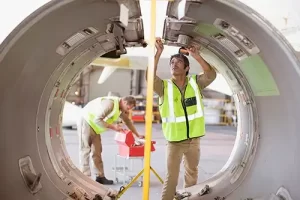 The components used in aerospace applications are expected to perform over extended periods, often up to 50 years. Quality assurance is critical at every stage of the product life cycle to ensure these components can withstand continuous long-term use while maintaining safety and performance.
The components used in aerospace applications are expected to perform over extended periods, often up to 50 years. Quality assurance is critical at every stage of the product life cycle to ensure these components can withstand continuous long-term use while maintaining safety and performance.
From the initial design and development, where simulations and prototyping validate the performance and safety of designs, to manufacturing and production, where each part is scrutinized through first article inspections and ongoing quality checks, quality assurance is omnipresent.
Moreover, the maintenance and repair phase involves regular inspections and preventive maintenance to address any potential issues promptly, ensuring the aircraft remains airworthy and operates safely over its service life.
By embedding quality assurance deeply into every phase of aerospace manufacturing, companies not only meet but often exceed the rigorous requirements set by the industry, thereby ensuring that their products are safe, reliable, and effective. This commitment to quality builds a strong reputation and ensures customer trust, which is indispensable in the competitive aerospace market.
Regulatory Standards and Compliance
In the aerospace parts manufacturing sector, adhering to regulatory standards and achieving compliance are paramount to ensure safety, reliability, and quality. Two pivotal standards that govern this domain are AS9100 and ISO 9001, each tailored to meet the specific needs of the aerospace industry.
AS9100 and ISO 9001
AS9100 is an enhancement of the ISO 9001 standard, designed specifically for aerospace manufacturing. It incorporates all ISO 9001 requirements and adds additional criteria to address the rigorous demands of aerospace operations.
The International Aerospace Quality Group (IAQG), which includes representatives from major aerospace companies globally, supports AS9100. This certification is crucial for organizations aiming to supply products used in aerospace applications, as it encompasses vital aspects such as risk management, project management, and configuration management.
ISO 9001, while a generic quality management system applicable across various industries, focuses on customer satisfaction and continuous improvement. However, in the context of aerospace, AS9100 certification is often a prerequisite, ensuring adherence to specific regulatory requirements that enhance product safety and reliability.
FAA Regulations and Certification
The Federal Aviation Administration (FAA) sets forth comprehensive regulations that aerospace manufacturers must comply with to ensure the highest safety standards. The certification process, as detailed in FAA Order 8900.1, involves rigorous evaluations at multiple stages of product development. This process ensures that all aerospace components not only meet design and operational standards but also adhere to safety regulations.
FAA certifications, including type, production, and airworthiness certificates, are crucial for aerospace products. Each certification type addresses different aspects of aerospace manufacturing and operation, ensuring that every component and system complies with stringent safety and quality standards. For instance, type certification verifies the design’s adherence to safety standards, while production certification confirms that manufacturing processes produce consistent, high-quality products.
By maintaining strict compliance with these standards and regulations, aerospace manufacturers can guarantee the safety, performance, and reliability of their products, meeting both customer expectations and regulatory requirements. Compliance also facilitates ongoing improvements and innovations within the aerospace industry, ensuring that manufacturers remain competitive and relevant in a rapidly evolving sector.
Techniques and Tools for Quality Assurance
In the aerospace industry, quality assurance is paramount, leveraging advanced tools and methodologies to ensure that all components meet stringent standards. Two of the most critical techniques used are Statistical Process Control (SPC) and Failure Modes and Effects Analysis (FMEA).
Statistical Process Control
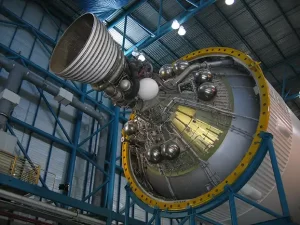 Statistical Process Control (SPC) is integral to aerospace manufacturing, enabling companies to monitor production processes in real-time. By applying SPC, manufacturers can detect deviations from a set standard, allowing for immediate corrective actions to maintain quality. This method uses statistical methods to monitor and control manufacturing processes, thereby reducing variability, enhancing product quality, and minimizing waste and costs. For instance, aerospace companies utilize SPC to analyze data collected during manufacturing to quickly identify any process that deviates from its normal operating conditions. This proactive approach helps in maintaining the rigorous standards required in aerospace parts production.
Statistical Process Control (SPC) is integral to aerospace manufacturing, enabling companies to monitor production processes in real-time. By applying SPC, manufacturers can detect deviations from a set standard, allowing for immediate corrective actions to maintain quality. This method uses statistical methods to monitor and control manufacturing processes, thereby reducing variability, enhancing product quality, and minimizing waste and costs. For instance, aerospace companies utilize SPC to analyze data collected during manufacturing to quickly identify any process that deviates from its normal operating conditions. This proactive approach helps in maintaining the rigorous standards required in aerospace parts production.
Failure Modes and Effects Analysis
Failure Modes and Effects Analysis (FMEA) is another essential tool in the aerospace sector, used to anticipate potential points of failure in manufacturing processes. FMEA helps identify possible failures in both design and production stages. By analyzing components and assemblies for possible failures and their impacts, aerospace engineers can implement strategies to mitigate risks. This systematic method involves reviewing as many components, assemblies, and subsystems as possible to identify failure modes, and their causes and effects. It plays a crucial role in improving both the product’s reliability and safety, ensuring that potential problems are addressed before they affect the outcome.
Through the application of these robust techniques, aerospace manufacturers can achieve a higher level of quality assurance, ensuring that every component not only meets but often exceeds, the rigorous safety and performance standards expected in the industry. This commitment to quality assurance drives continuous improvement, enhances safety, and ensures customer satisfaction in aerospace manufacturing.
Supplier Audits and Quality Checks
Supplier audits are essential for verifying that the manufacturing processes of suppliers adhere to the required quality standards and regulatory requirements. These audits assess various aspects of a supplier’s operations, including their quality systems, production processes, and compliance with industry standards such as ISO 9001 and AS9100.
Regular audits help in identifying potential risks and inefficiencies, allowing for timely corrective actions. This proactive approach is vital in industries like aerospace, where the quality of components can directly impact the safety and functionality of aircraft.
Implementing thorough quality checks throughout the manufacturing process further ensures that each component meets stringent industry standards. These checks include detailed inspections and testing of materials and parts to confirm their quality and suitability for use in aerospace applications. Advanced technologies such as X-ray scans and ultrasonic tests are employed to detect any underlying issues that might compromise the integrity of the components.
Managing Counterfeit Risks
The rise of counterfeit parts in the aerospace industry poses significant risks to safety and compliance. Counterfeit components often come with forged documentation, making it challenging to verify their authenticity and quality. To combat this issue, aerospace companies are enhancing their procurement processes and adopting stringent measures to ensure the traceability and authenticity of their parts.
Strategies to mitigate the risks associated with counterfeit parts include the adoption of blockchain technology for tracking the provenance of components and implementing robust cybersecurity measures to protect supply chain data. These technologies help in maintaining a secure and transparent supply chain, where the authenticity of parts can be verified to prevent the use of counterfeit components.
Furthermore, the industry is moving towards more collaborative efforts involving manufacturers, suppliers, and regulatory bodies to standardize practices and share information on counterfeit risks. These collaborative efforts are crucial for developing a unified approach to tackling the challenges posed by counterfeit parts in the aerospace supply chain.
Continuous Improvement in Aerospace Manufacturing
In aerospace parts manufacturing, continuous improvement is pivotal for maintaining competitiveness and adhering to stringent quality standards. This section explores two fundamental approaches that facilitate this ongoing enhancement: Lean Manufacturing Techniques and Six Sigma Implementation.
Lean Manufacturing Techniques
Originally developed for the automotive industry, Lean Manufacturing principles have been effectively adapted by aerospace companies to enhance production efficiency. The essence of Lean is to maximize value by minimizing waste and inefficiencies. Aerospace manufacturing, characterized by high-mix and low-volume production with tight tolerances, presents unique challenges.
Lean initiatives in this sector often focus on reducing wastes like unnecessary transportation and motion, which can significantly impact production times and costs. For instance, targeted lean programs at aerospace plants have demonstrated remarkable improvements, such as a 75% reduction in scrap and reworking costs and a 35% decrease in lead times within just six months.
Six Sigma Implementation
Six Sigma offers a complementary approach to Lean, emphasizing defect reduction and process optimization through statistical analysis and rigorous data scrutiny.
In aerospace manufacturing, where even minor deviations can lead to significant repercussions, Six Sigma methodologies enhance consistency and reliability. By identifying and eliminating sources of variation, this approach ensures that each component not only meets but often exceeds, the rigorous safety and performance standards. The integration of Lean Six Sigma not only streamlines processes but also fosters a culture of continuous improvement, making aerospace companies more agile and responsive to market demands.
Implementing these methodologies involves a collaborative effort across all levels of an organization. Training employees in Lean and Six Sigma principles, forming cross-functional teams, and fostering a mindset geared towards continuous enhancement are essential steps. Companies that successfully adopt these practices not only achieve operational excellence but also position themselves as leaders in the highly competitive aerospace industry, continuously innovating and improving to meet the evolving demands of technology and market dynamics.
Future Trends in Quality Assurance
In aerospace parts manufacturing, the push towards enhanced quality assurance continues to evolve with technological advancements. Two significant trends poised to reshape quality assurance practices include the integration of automation and robotics, and the implementation of blockchain technology for improved traceability.
Automation and Robotics
The adoption of automation and robotics in aerospace manufacturing is set to increase precision and efficiency while reducing human error. Automated systems and robotic arms are being increasingly deployed to perform repetitive and precise tasks, such as component assembly and quality inspections. These technologies not only speed up the manufacturing process but also enhance the consistency of the outputs. By integrating advanced sensors and machine learning algorithms, robotic systems can now identify defects that might escape the human eye, ensuring every part meets stringent quality standards.
Blockchain for Traceability
Blockchain technology offers a revolutionary approach to managing traceability in the aerospace supply chain. By enabling a transparent and immutable ledger of all transactions and manufacturing data, blockchain provides a verifiable and secure method to track the lifecycle of aerospace components. This capability is crucial for ensuring the authenticity of parts and preventing the use of counterfeit components, which can compromise aircraft safety and performance.
Aerospace companies are exploring blockchain to enhance parts traceability and compliance with regulatory standards, ensuring that every component can be traced back to its source.
These future trends in quality assurance are integral to advancing aerospace manufacturing, focusing on enhancing safety, reliability, and efficiency in the production of aerospace components. As these technologies mature, they promise to bring about significant improvements in how quality is managed and maintained in this critically important industry.
Conclusion
As the aerospace industry continues to evolve with advancements in technology and manufacturing practices, the importance of adhering to stringent quality standards remains at the forefront of ensuring the safety and reliability of aerospace operations. For organizations looking to elevate their aerospace projects with precision and excellence, leveraging expertise from leaders in the field becomes essential.
For your next Aerospace project, visit AIP Precision Machining www.AIPprecision.com , where cutting-edge solutions meet quality assurance to push the boundaries of what’s possible in aerospace manufacturing. This journey towards excellence is not just about meeting the current demands but also about redefining the future of aerospace parts manufacturing.
FAQs
What does quality assurance entail in the aerospace industry?
Quality assurance is a critical component of aerospace manufacturing, encompassing all phases from inception to completion. Quality assurance engineers play a pivotal role in ensuring that every aerospace component adheres to stringent quality standards and specifications before being dispatched from the manufacturing facility.
What does QC refer to in the context of aerospace manufacturing?
In the aerospace sector, QC (Quality Control) pertains to the oversight of aerospace structures and components, including those made from composite and metal materials, as well as their raw materials. Throughout various stages of production, quality control tests are mandatory to maintain the integrity of the production process.
Can you explain what a QMS is in the aerospace industry?
An Aerospace Quality Management System (QMS) is a comprehensive framework comprising processes, policies, and procedures designed to ensure that aerospace products and services consistently meet the highest standards of quality and safety.
What tools are commonly used for quality assurance in the aerospace industry?
The aerospace industry utilizes a variety of quality assurance tools to maintain high standards. These include Non-Destructive Testing (NDT) equipment such as ultrasonic testers and eddy current systems for material inspection, Coordinate Measuring Machines (CMM) for precise measurements, and software tools for statistical process control and documentation management.

